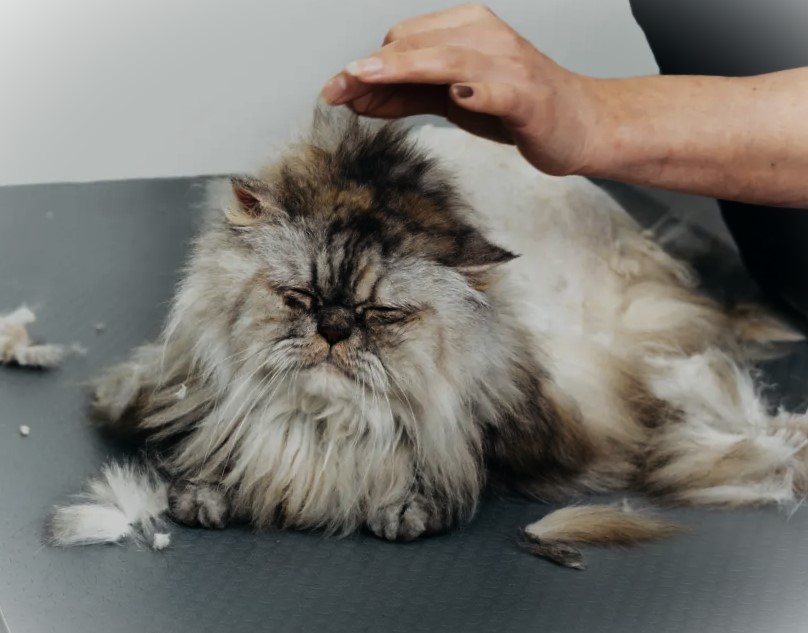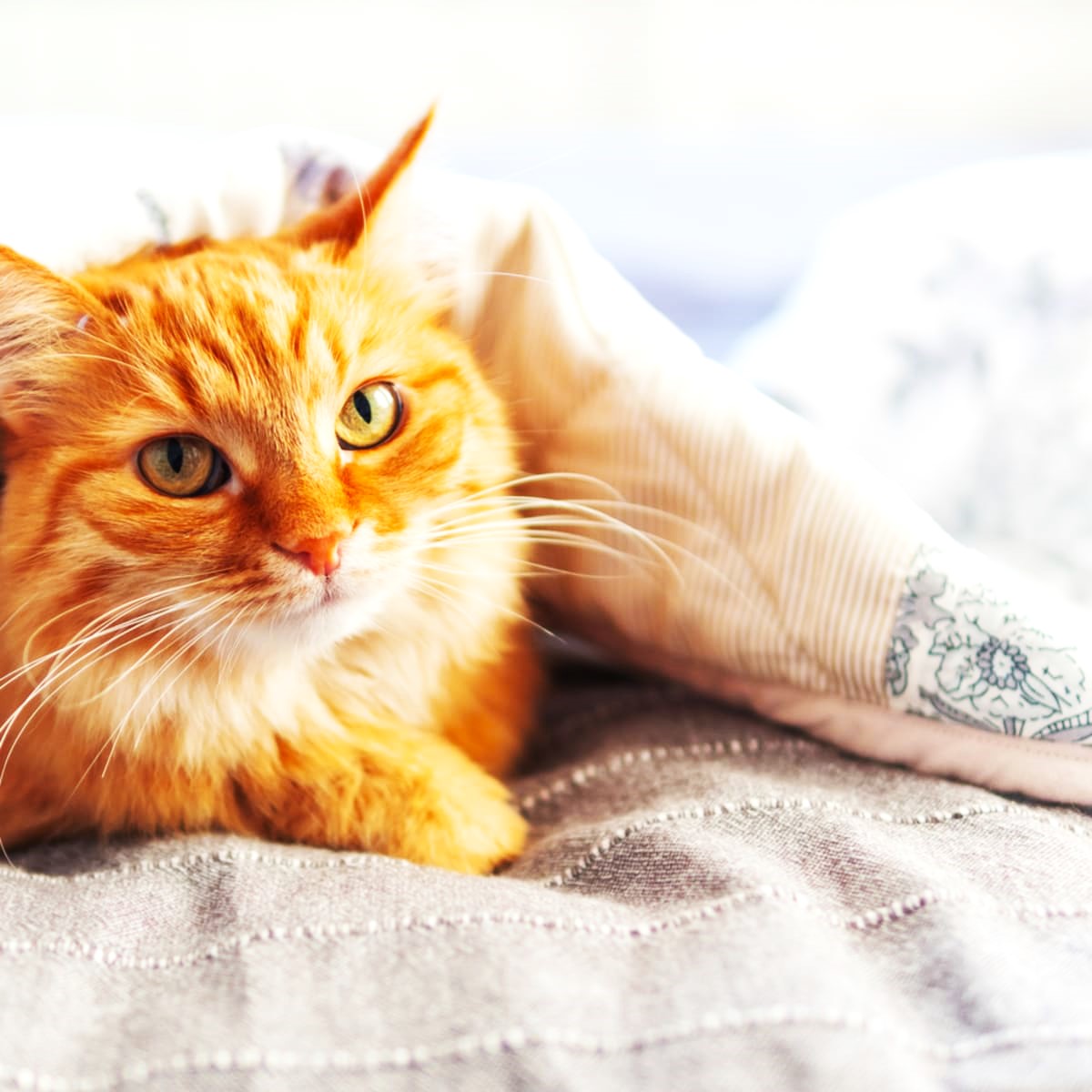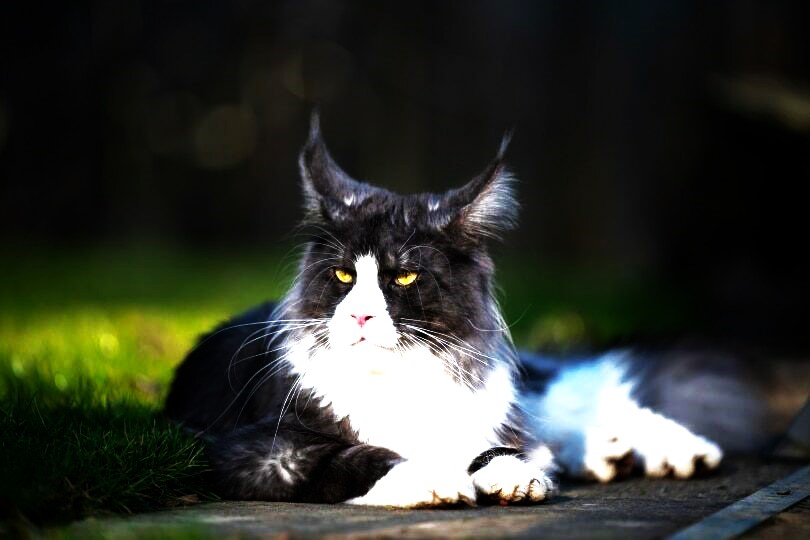Matting your cat’s fur can be removed by shaving or combing through the mats. Dead skin cells, clumped hairs, outdoor residues, and any other dirt your cat has rubbed against can all be found in mats. Not only are matting in your cat’s fur unsightly, but they hurt your cat as well. If they are not removed, they may cause infection and skin irritation.
Both the cat and the owner usually don’t enjoy de-matting a cat. Since mats are frequently difficult to remove in one sitting, it’s important to proceed cautiously and with patience. Although this method is the simplest and least painful way to remove mats, it requires a great deal of work, so you might want to consider hiring an assistant.
Cats with Matted Fur
It seems that most cats groom almost continuously, and it’s not just for show. Cats that lick their fur maintain healthy skin and encourage the production of oil by sebaceous glands in the skin, which lubricates the fur. There are instances when the fur gets matted in places and needs to be removed by hand. When you pet your cat, their fur may feel tangled or lumpy due to these mats.
What Leads to Cat Fur Matting?
Grooming typically keeps the fur tidy and keeps fleas from multiplying. However, mats can occasionally form, especially if a cat fails to properly groom itself or gets something stuck in its fur. In some places, friction or surface contact can also cause mats to form.
Due to illness or behavioral issues, cats may cease grooming entirely or only partially. Senior or overweight cats may find it difficult to reach specific parts of their bodies, which can result in mats that frequently form along the lower back.
Because of the nature of their coats, some cat breeds—such as Persians, Maine Coons, and other long-haired breeds—are more prone to develop matting.
Why Is Cat Fur Matted Bad?
For cats, tangled fur can cause excruciating pain. Over time, mats may become increasingly constricted, applying pressure to the skin that may cause bruises and skin irritation. In addition to obstructing skin airflow, matted fur can harbor bacteria, parasites, and dirt. An infection on the skin can easily result from the irritation mats cause. Furthermore, the skin beneath mats gets thin and brittle, increasing the risk of injury.
Mats that appear out of nowhere frequently indicate that the cat is unable or unwilling to groom. If your cat has completely stopped grooming itself, a visit to the vet is probably necessary as this may indicate a serious health problem.
It’s critical to quickly remove matting from cat fur in order to prevent skin pain and irritation. You should be able to take care of your cat at home if they appear to be grooming normally and there are just one or two stubborn matted fur patches. Seek professional assistance if your cat appears particularly uncomfortable or if there are a lot of mats.
Cat Mat Combing Instructions
Hand combs are often a good way to remove small mats that aren’t too close to the skin. It takes a steady hand, a lot of patience, and occasionally multiple people to remove a cat’s mat while keeping it calm.
Beginning
Grooming a calm cat is ideal. In the middle of a play session, you won’t want to abruptly remove a mat lest you sustain severe claw damage.
A fine-toothed comb, some baby powder or cornstarch, and some delectable cat treats are required.
Using your fingers, gently work a small amount of cornstarch or talcum powder into the mat’s surface. To see where the skin is, gently lift the mat away from the skin.
If the cat doesn’t cooperate, stop, talk to it in a calming tone, and pet it until it becomes calm. If your cat begins to become anxious during the process, repeat this calming technique at any time.
Making Use of the Comb
To prevent the comb from pulling hair out, start with a different area of the mat and use your non-dominant hand to hold the base of the mat down with your thumb and forefinger. Beginning at the very tips of the hairs, carefully begin combing through the mat piece. As you work, move down into the mat; for particularly difficult areas, use only the first three or four comb pegs.
For cats with short hair, you can use a small slicker brush to gently and slowly work through any remaining tangles.
After giving your cat one last treat, call it a day. Don’t try to tackle all of the mats at once; it may take several days, depending on how bad they are. You also need your cat’s cooperation and patience.
How to Use a Clipper to Remove Cat Mats
You might want to try using clippers to remove the mats if they are too tight to be removed with a comb. It’s best to use quiet, small, battery-operated clippers for cats, as they are less likely to frighten them.
Presenting the Clippers
To begin with, you should give your cat some time to get acclimated to the sound and sensation of the clippers. After giving treats, turn on the clipper for a short while while watching from a distance. Continue to offer treats and gradually move the clippers closer together. If the clippers start to frighten your cat, stop them. Your cat might need a few days to adjust to the slippers.
Remove the mats by shaving.
Start by brushing or combing the cat’s non-matted areas. Shaving mats: Slide the clipper blade under the mat gently while holding the flat end of the clippers parallel to the skin. While guiding the clippers under the mat, use your fingers to gently pull the mat away from the skin.
Take frequent breaks, particularly if your cat is becoming agitated or uncooperative. Reward your cat with a small treat and lots of love for their perseverance.
CAUTION
Avoid attempting to cut out mats with scissors as you run the risk of inadvertently cutting your cat’s skin. This may result in a severe wound that needs to be repaired surgically. If it appears that scissors are needed for the task, speak with a veterinarian or a professional groomer.
How to Avoid Cat Hair Mats
Regularly brushing your cat is the best way to avoid mats. In particular, if your cat has long hair, this is crucial. Additionally, when you routinely pet your cat, feel over their body to see if there are any mats, knots, or tangles. Small mats will become less complicated the sooner you address them.
When to Seek Expert Assistance
Cats that are extremely matted need professional care. Multiple mats can usually be addressed by a professional groomer if the cat is not in severe pain. To keep them comfortable while the hair coat is combed out, trimmed, and shaved to remove mats, some cats will need to be lightly sedated. You’ll need to visit your veterinarian for this.
To get rid of all the mats, some cats will need to have their entire coats shaved down. If you must take this extreme measure, make sure to continue a consistent regimen of combing and brushing when the coat grows back to avoid more issues.
Advice
- Don’t wash a cat before getting rid of mats.
- If you have small tangles that haven’t yet formed “felt,” try spraying with a small amount of pet hair conditioner before combing; you’ll only have worse problems on your hands. Make sure to use a pump-style spray instead of aerosol, as the latter will frighten your feline.
- Having a helper to hold and console the cat during this tiresome process will almost always make it go more smoothly.
FAQ
Is it possible to treat cat matting at home?
You can comb out mats more easily by loosening them with cornstarch or baby powder.
According to some pet parents, mats can fall out in a few days if a drop or two of olive oil is placed underneath them. Try this with a very small amount of olive oil, as your cat might swallow it while grooming. An excess of olive oil may upset your stomach. Never apply non-food or essential oils to your cat.
Do cats experience pain from matted fur?
Yes, cats may experience severe pain from matted fur that tightens against their skin. Fur clumps can also irritate skin and even result in infections. Furthermore, unkempt fur could be a sign of poor grooming, which is frequently a symptom of a cat’s illness.
Contact your veterinarian right away if you think your pet may be ill. Always seek the advice of your veterinarian for any health-related queries, as they have examined your pet, are familiar with its medical history, and can offer the best advice.




